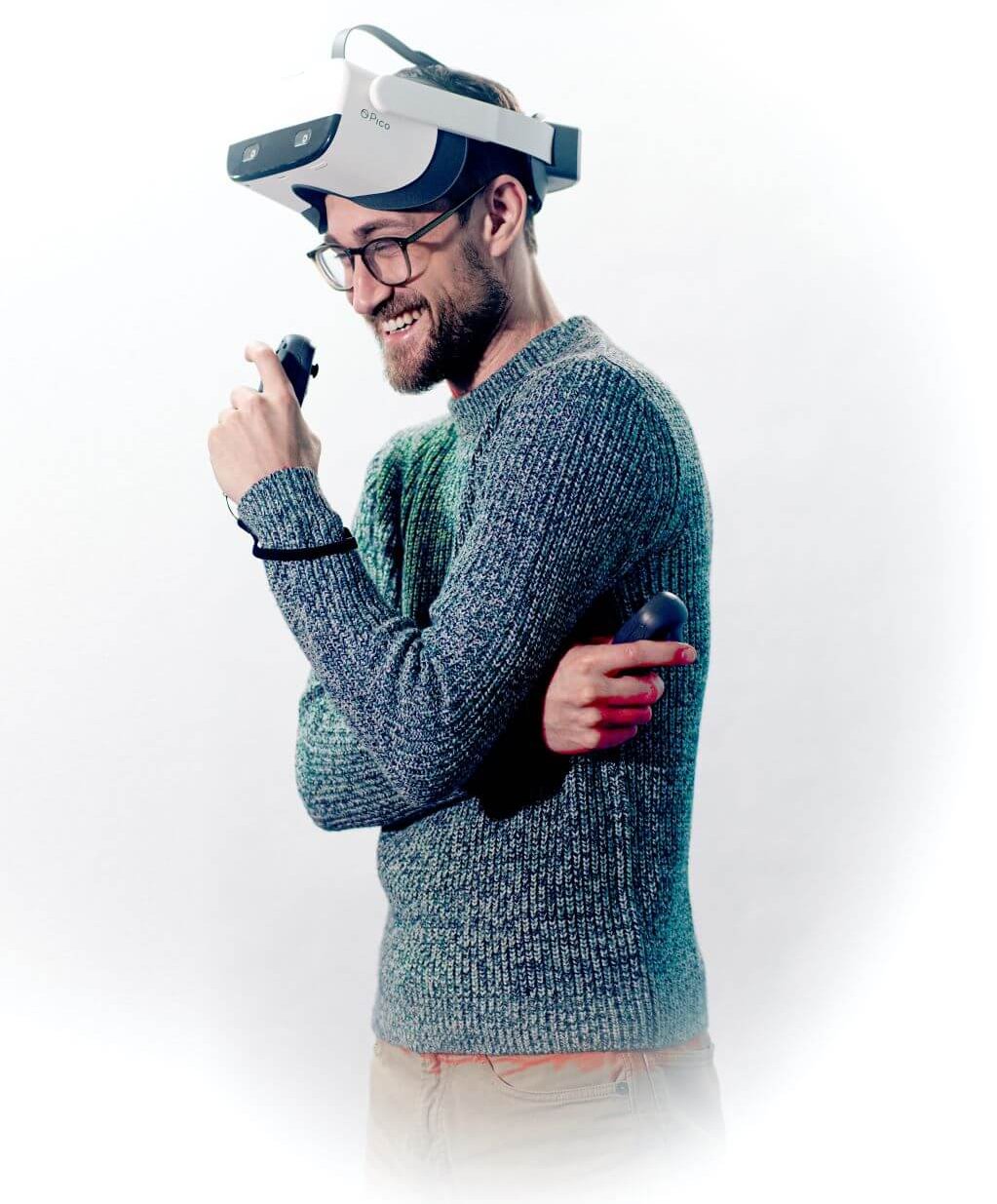In times when most theaters are closed in social distancing efforts, it’s worth thinking twice about live theater. The audience, of course, is potentially in relatively close quarters. However, the actors on the stage are also in tight proximity in their own space on the stage.
We know that we can enjoy immersive media, but can we produce virtual theater?
Brendan Bradley can and does with his Future Stages project.
Meet Brendan Bradley
Bradley may principally be a stage and screen actor, but he’s been interested in “new media” since 2007 when he started exploring YouTube.
“I kind of came at digital media as a liver performer first, I didn’t see digital media as a new medium,” Bradley said in a remote interview with ARPost. “I look for the ways in which it’s the same rather than in the ways in which they’re different.”
While Bradley found some not inconsiderable success there, he also started exploring immersive media a few years later, even contributing to the launch of a namesake virtual theater studio at NYU in 2017. When the pandemic came, it was time to think bigger.
“The pandemic brought about this collision of my two loves: interactive media and fine arts,” said Bradley. Bradley regularly pointed to the idea that fine art and immersive art don’t need to be different things. “If we get into the trap of thinking that everything with a lens is cinema, we’re going to lose that battle.”
Navigating Hardware
The early battle was overcoming the sticker shock that comes with outfitting remote actors with the hardware necessary to create a virtual theater production. Bradley came across the Pico Neo 2 headset.
“Of all of the stand-alone units, what I like about Pico is that – even though it’s heavier than other headsets if you put it on the scale – it’s balanced in a way that doesn’t make the actors feel fatigued,” said Bradley.

Bradley’s process uses VR headsets to take as many as three separate actors and put them together on the same virtual stage. He’s not the only one that finds the process new and exciting.
“We’re really excited about seeing how people are using VR to advance whatever their business is. In this case, it’s an actor and his craft,” said Pico Interactive Director of Western Marketing and PR, Logan Parr. “It’s great seeing people like Brendan who are taking this technology and putting it to new use.”
Virtual Theater for Everyone
Having a usable headset was important, but using virtual reality to create virtual theater is still a tricky business. Bradley and his troupe would need to break a lot of new ground.
“It was a massive learning curve. I think in some ways we were all starting from square one,” said Bradley. “We were all learning and creating the rules and the environment as we went along.”
Despite the strange territory, there are huge advantages to virtual theater that might not occur to the casual viewer of virtual or live performances.
As Bradley explained it, in a live production, when an actor wanted a prop it could take weeks to have one made. Not so on the virtual stage.
“We can summon any prop in the world,” said Bradley. “I think that there will never not be a digital component to live storytelling going forward.”
Of course, the productions don’t only need to be created – they also need to be attended.
Not wanting to face the headset price point again or wander into walled gardens that would keep out potential viewers, Bradley opted to host his productions on Mozilla Hubs. The hardware-agnostic platform for immersive videos and experiences can even be accessed on most smartphones.
“There’s Room for Everyone”
Bradley’s story isn’t just something one person did that you can now go and watch. It’s also a call to action. As Bradley says, he’s “just an actor” – so if he can create virtual theater, so can anyone.
Bradley even created an hour-long free behind-the-scenes video explaining shot for shot how he created and edited one of his recent virtual performances.
“Being a digital native and working in digital tech doesn’t mean that I have been working in VR for ten years,” said Bradley. “I just, in June, pivoted to working in this new workflow. There’s room for everyone.”




